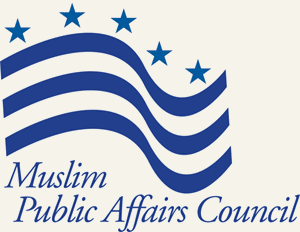By Ruth Broyde Sharone
MPAC RELEASES ‘SAFE SPACE ’
Moderate Muslims and interfaith activists are regularly, persistently asked the question:
Why don’t your leaders step forward and protest the advancing threat of Islamic extremism? Especially in light of troubling headlines from Iraq and Syria in recent weeks?
In fact, American Muslims have established dedicated websites brimming with articles and YouTube segments by prominent Muslims leaders, citing the Quran and full of harsh condemnation against religious extremism – websites mostly unknown to the greater public. Heretics have “high-jacked” their religion and caused Muslims in America and the world to be targets of Islamophobia, and they are raising their voices. Only recently have major media started to pay attention.

So it comes as no surprise that MPAC, the Muslim Political Affairs Council, has launched Safe Space, an initiative that seeks to help American Muslim communities as well as those overseas to create spiritual safe spaces for open dialogue and debate, while also providing physical safe spaces by helping mosque and community leaders deal with misguided individuals.
It is designed to confront terrorism and the radicalization of Muslim youth. The initiative contains a comprehensive tool kit to help mosques and community leaders identify potential radicals among their youth. It also offers training for working with troubled youth and steering them away from radicalization and terrorism.
Salam Al-Mariyati, MPAC’s California executive director, in a recent interview on National Public Radio, said he hopes all 2100 plus mosques in the U.S. will take advantage of the Safe Space toolkit. If they could have identified the Boston Marathon bombers early enough, he said, and if local leaders had received training to address their erratic behavior, the disaster two years ago, killing three and injuring 264, might have been averted.
MPAC’s “PIE” model (an acronym for Prevention, Intervention and Ejection) outlines their approach to tackling violent extremism. It is based on two assumptions: (1) a person’s path to violence is unique and involves many factors, and (2), the path to violence can be slowed, stopped, reversed and/or prevented with proper community support.
“Let’s be clear,” the MPAC website reads:
Our communities are comprised of hardworking, productive members of society, whose historical connection to our country goes back to the establishment of the early colonies, before America became an independent nation. Therefore, violent extremism is not “someone else’s problem . . . to think that one’s own child, friend, or relative is immune from extremist tendencies is dangerously naïve and mistaken.
They point out how extremist groups prey on vulnerable and misguided members within the Muslim communities “in order to recruit people to their backward ideology.”
A growing number of young Muslim men and women, born in America and Canada, have abandoned their families and friends to fight alongside ISIS. Security authorities in the U.S., Canada, Europe, and elsewhere are struggling to understand what lures young people and how to institute preventative measures to short-circuit their recruitment.
MPAC California executive director, Salam Al-Mariyati – Photo: MPAC
Pointing out that violence by young people is also perpetrated by non-Muslims on college campuses such as Columbine and Virginia Tech, the Safe Space campaign has taken its inspiration from new preventive measures developed after those campus events. Trained teams of teachers, psychologists, and other staff were established in order to identify problems and explore alternatives to arrest, such as counseling. “That’s exactly what the Safe Space Initiative is about,” Al-Mariyati stresses.
“We believe our communities can establish processes to identify and properly intervene in situations where a person may be heading down a path of violence.
The goal of the tool kit is to provide mosques and Muslims leaders with practical advice on what intervention processes might look like; it conjectures on why some people adopt divisive ideologies while others take a more radical step of committing themselves to violence. The architects of the tool kit acknowledge that dialogue is sometimes inadequate. “In some cases, individuals may still choose to continue down a path of destruction despite the community’s best efforts, and, in those cases, we provide information to help communities decide when it is time to call law enforcement versus when there is still an opportunity to stage an intervention.”
The Initiative concludes with the hope that the tool kit helps community leaders develop ways to focus on awareness and dialogue in the broader community environment “so that individuals on the fringe never find a receptive community or have any chance to go down a violent path. We have a shared stake in keeping our nation and our communities safe from any threats.”


